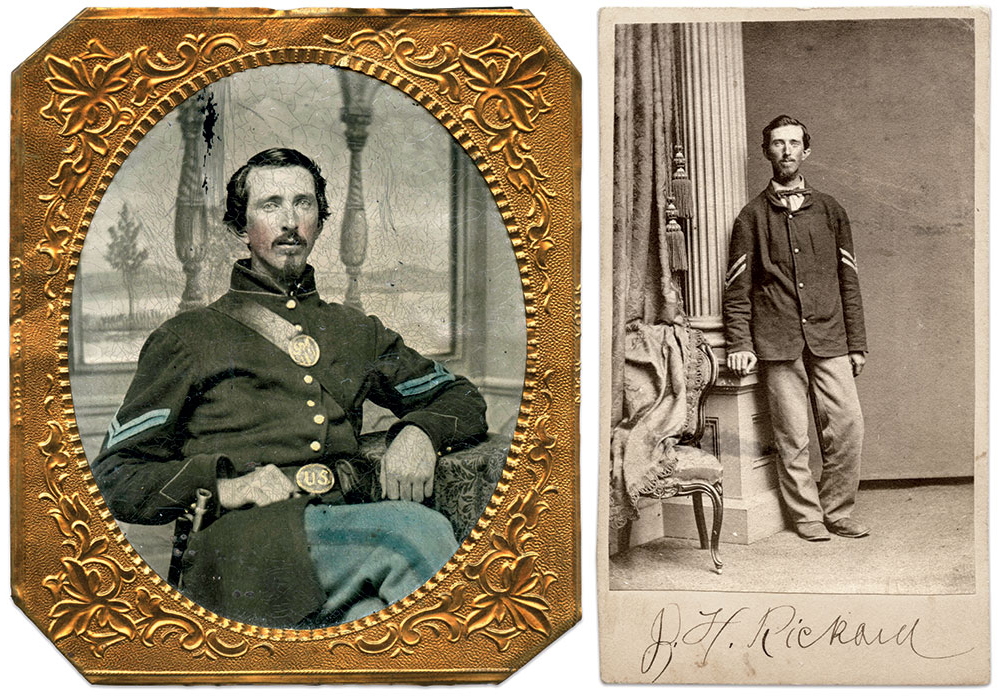Behind every Civil War portrait photograph lies a question that the person paying the bill had to consider: Which format do I choose? Two primary options were available. Hard plates, in the form of an ambrotype, tintype, or, early in the war, a daguerreotype. Or albumen paper prints, notably the carte de visite. How a sitter came to make the choice is almost impossible to know. Popular culture, economics and other factors offer clues as to how they might have decided the format best suited to their needs.

SPREAD THE WORD: We encourage you to share this story on social media and elsewhere to educate and raise awareness. If you wish to use any image on this page for another purpose, please request permission.
LEARN MORE about Military Images, America’s only magazine dedicated to showcasing, interpreting and preserving Civil War portrait photography.
VISIT OUR STORE to subscribe, renew a subscription, and more.

